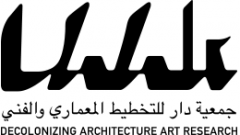The molecular level of the occupation is the single-family house on a small plot of land. Investigating ways to transform this repetitive semi-generic structure may open up ways to transform the entire geography of occupation. What are its limits of transformability? Can a single-family home become the nucleus of new types of public institutions? Which structural arts should be retained and what are the possible ways of connecting together groups of houses? The problem is also how to transform a series of small-scale single-family houses into unified clusters of communal space, to accommodate larger functions like halls and classrooms, laboratories for a research institute, clinics and offices.
The problem of ‘unhoming’ is not only a technical question of transformations. A lingering question throughout the project was ‘how to inhabit the home of one’s enemy? Within the multiple cultures that inhabited Palestine throughout the decades, rarely has one ever been the “first” or “original” occupier; but rather one is always a subsequent. To inhabit the land is always to inhabit it in relation either to one’s present-day enemies or to an imagined or real ancient civilization. This is a condition that turns the habitation of old cities, archaeological sites, battlegrounds, and destroyed villages into culturally complex acts of cohabitation.




DECOLONIZATION MANUAL Conception and design overview by Salottobuono
